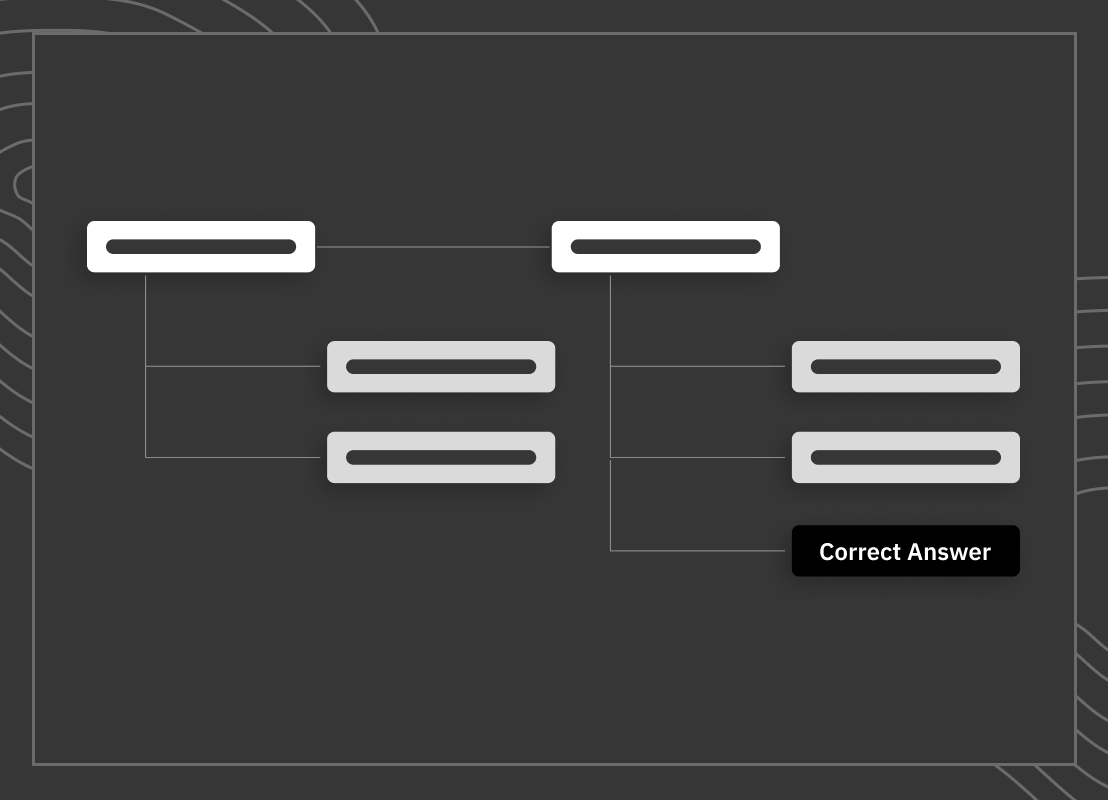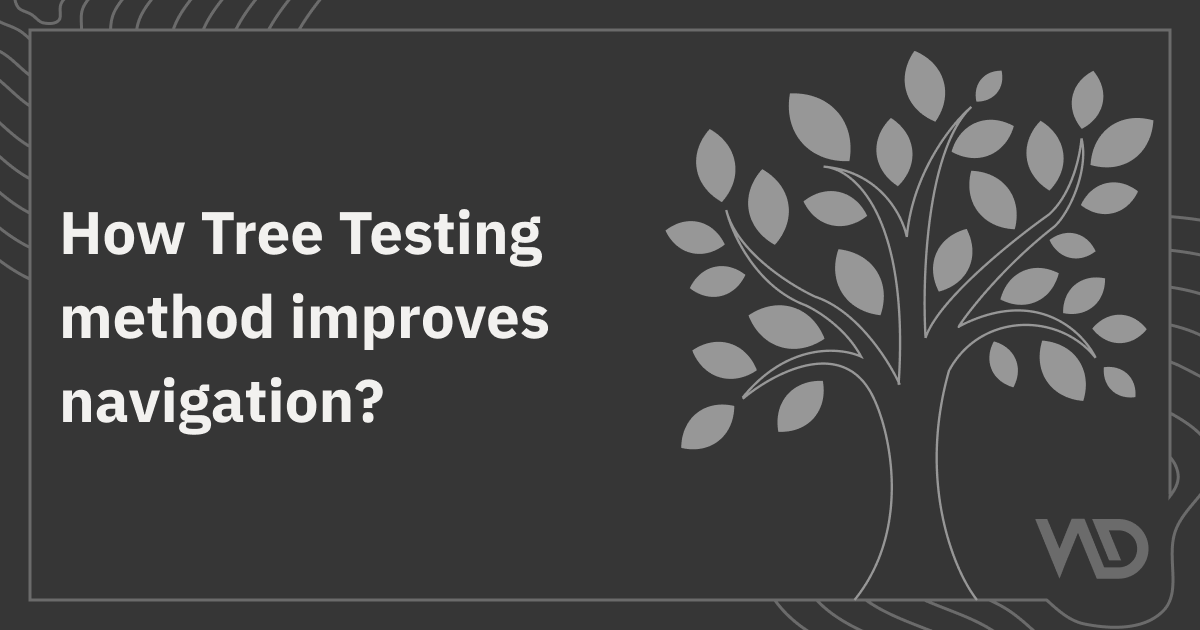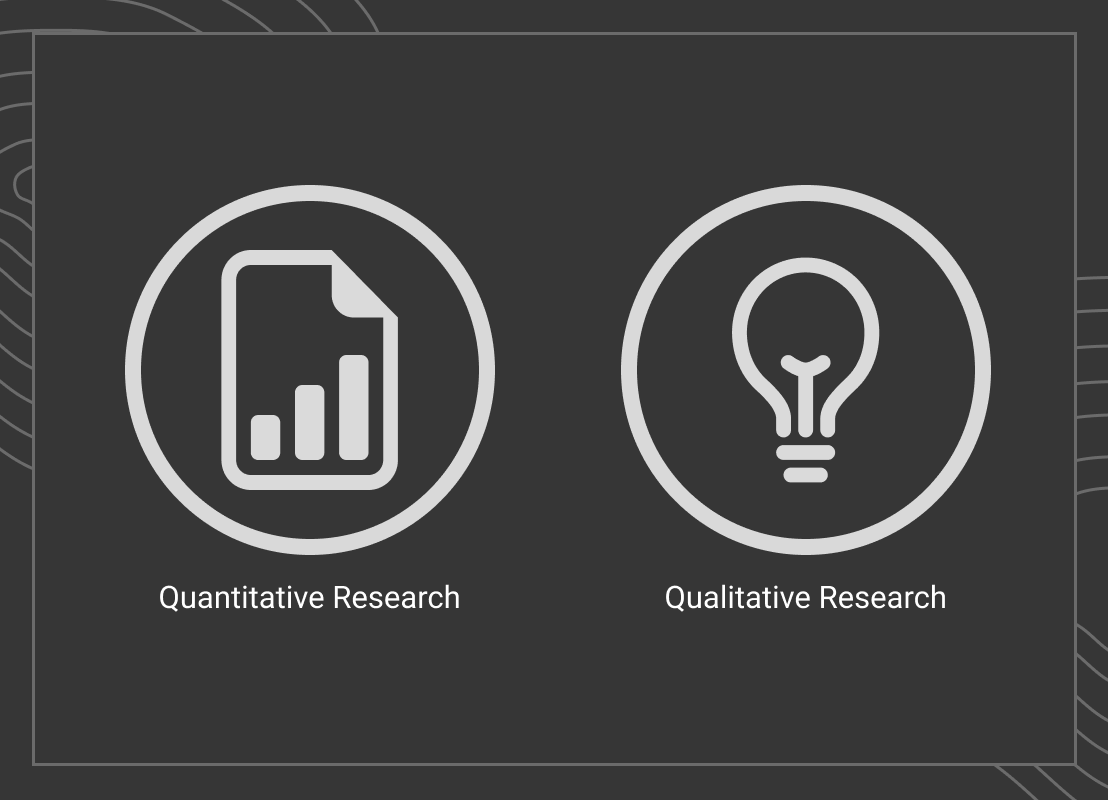The tree testing method in UX is a research method for evaluating hierarchy, and research plans, making things easier to find and navigate. It is called the tree testing method because the hierarchical structure consisting of categories and sub-categories branching from the homepage looks like a tree. Another one of the UX research methods used to solve Information Architecture issues is card sorting. After card sorting, we can conduct the tree method. It is also known as reverse card sorting. UX research is an important foundation for web design services and mobile app design services.
What is UX Research?
UX stands for User Experience. The user’s feeling when interacting with the product becomes a factor in shaping the user’s interaction with the brand. UX research is the study of users that helps the designers understand the user’s requirements. We can determine the user’s needs, wants, motivations and problems by doing research. We can then use this data to improve the user’s experience and interaction with the brand.
UX research methods are investigative methods that generate insight into problems the users are facing. Some user research methods are heuristic evaluation, customer feedback, surveys, interviews, card sorting, tree testing method, etc.
Quantitative and Qualitative methods
- Quantitative Research: This research mainly deals with numerical data, data collection, statistical data, etc. We perform quantitative analysis with UX research tools such as surveys, app analytics, card sorting, and quantitative usability testing. However, quantitative analysis in a large sample often leaves random and scarce events. We can do Qualitative research to rectify this, which helps give more information as to why the numerical data is the way it is.
- Qualitative Research: It is an observation about how to understand the user. It gives an insight into the “why” and “how” of the user and makes it easier to empathize. We can obtain Qualitative data by conducting interviews, focus groups, Ethnography, Literature reviews, etc. Qualitative analysis usually precedes quantitative research to explore ideas and discover insights.
How the tree testing in UX research works?
The tree testing method is a simple task-based activity that can be done using online tools or in person. The testers are given a list of tasks and shown the hierarchical structure. Our tree should be a complete list of the homepage and branch out to the categories and sub-categories.
The hierarchical structure given to the testers is the text-only version of our website design service. The categories of this structure are parent nodes and the sub-categories are called child nodes.
Even when the task is related to a specific branch, it is better to include the entire structure. The participants go through this structure to find elements that will lead them to find solutions to the given tasks. If we exclude some categories, it is possible that the testers might get confused and not understand the differences between categories.
We can conduct the tree testing method in a remote setting using an online testing platform to upload our tasks for our research. We can also add some additional survey questions as a follow-up to our test to gain information.
The tree-testing method can give you both quantitative and qualitative insights. The answers the participants give for the task will give us quantitative data. The survey questions that can be asked after the participant completes the tasks can give us some qualitative data.

Choosing the correct tasks for our tree testing method
We should write the tasks in a way that does not entirely reveal the destination. It should recreate how the users might naturally approach our website. To avoid giving away the answers to the tasks, we can make up hypothetical situations and ask the users to put themselves in that situation to find the correct answer. For the test, as a thumb rule, we give the tester no more than 10 tasks. The average time to complete the tasks should be 10-15 minutes.
Starting the recruitment process for our tree testing method
Now that we have the hierarchical structure of our website and a set of tasks to go along with it, we are lacking only one thing; willing participants to solve our tasks. But we should not choose our participants randomly but rather recruit people from our target demographic. Melanie Buset, Senior UX Researcher at Shopify recommends that once we start seeing clear patterns emerge, we’ve got enough participants but we should aim for a minimum of 50 participants.
We can share the link from the testing tool with the participants we have recruited. They can take the test and answer the survey questions.

Evaluating the result of the tree testing method
The online tool used to take the test will compile the results of our participants. We can view the test results on the dashboard or download the results as a pdf report.
Some online testing tools have visual graphics displaying the limitations of our site’s structure. The metrics we can calculate from our results include:
1. Success rate: The number of participants who found the correct answer.
2. Directness rate: The number of participants who completed the task without second thoughts and found the correct answer on the first attempt.
3. Time: The average time it took for the participants to finish a task.
4. Routes: The path the participants took to find the correct answer.
Advantages of tree testing in UX research
1. Remote testing: Since we can conduct the tree testing test remotely, the participants don’t have to be present at a specific location to give the test.
We can use Tree testing tools such as Maze, TreeJack, UXTweak, UXArmy’s Tree Testing Tool, etc. For our research.
2. Recruitment is easier: Recruiting participants for conducting the test is easier since it is not too long. Also, the participants don’t have to commute since the test can be remote. So it becomes very straightforward.
3. Tree testing in UX is quick and effective: The tree testing method is fast and effective since the tasks are easier to complete. Since it is faster to perform these tests, we can do multiple tests and make changes according to the results.
4. Reveals navigation issues: After analyzing the data from the tree test tool, we can identify the navigation issues with our site or app that users face on our product. We can use this information to make improvements to the hierarchy of our website or app to make it more user-focused.
5. No Research bias: Research bias happens when the participants try to give the correct answer instead of the authentic one in an attempt to impress the person conducting the test. Since we do tree testing remotely, there are fewer chances of research bias.
Disadvantages of tree testing in UX research
1. Does not capture human behavior: Since the tree testing method is often remote, we can not observe the user experience and get feedback from the user regarding their choices. It also makes it difficult to ask personalized follow-up questions.
2. Only basic structure is analyzed: As the site structure is in a text-only format and there are no visual elements it makes it difficult for participants to navigate the site.
3. Only for navigation: From the tree testing method, we can only get feedback for navigation and the site structure. It does not provide feedback on the overall usability of the website.
Tree testing in UX research, like other UX methods, has its drawbacks. It is better to use tree testing in UX research along with card sorting to cover the basic site architecture and usability testing to ensure that the user can navigate the entire website.
We can conduct the tree testing method at any point in the design process to confirm that our navigation system is accurate.
Conclusion
UX research is the study of a user which helps us understand the needs and wants of our user. We can use the data gathered from UX research to improve the user experience. We can do quantitative or qualitative research to get numerical data or understand the user.
One of the methods we use to conduct user research is called card sorting. It helps solve issues with site architecture. We usually do the tree testing method after we finish card sorting.
The tree testing in UX research provides fast and efficient feedback on the hierarchical structure of a website. We can conduct the tree testing method in a remote setting. Therefore it’s easier to find willing participants for the test.
Using online testing tools we can analyze the answers given by the user and present them as metrics. These metrics are success rate, directness rate, time, and route.
Since the test is remote, it is easier to recruit participants for the test. It is also done very fast and efficiently and can reveal the navigation issues that might exist on the website.





1 comments